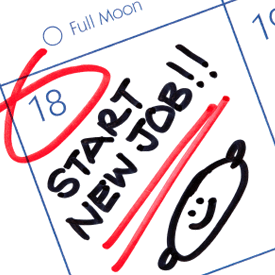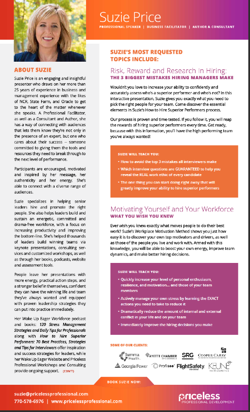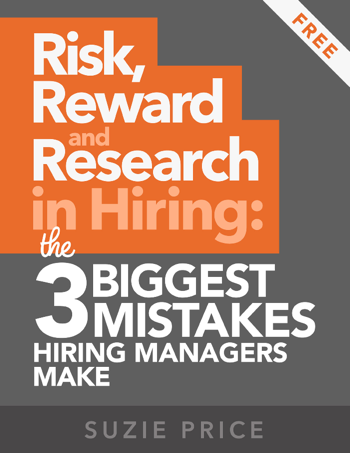The Know How You Need & the Tools to Get You There... Get Certified >

Communication In the Workplace -
Are 'Those People' Difficult or
Could They Just Be Different?
Have you ever tried to improve communication in the workplace with someone who seemed difficult? They're either too talkative OR too quiet. Too slow to make decisions OR too impulsive. Too big picture OR too hung up on the details. TOO something – and you felt frustrated by them?
And when these people behaved in ways you didn’t like, didn’t understand, and didn’t appreciate, what did you think? Did it seem like they were doing it deliberately to annoy you and make your life harder? A five year old would say it this way. “They did it on purpose!”
Did it feel like that?
Sure it did, because they weren’t doing things the way you prefer to do things. And be honest. Our way is the right way, isn’t it?
But let me ask you this.
Do you REALLY think those people had conscious negative intent or were they just marching to the beat of a different drummer? Okay, maybe some were actually out to make your life miserable, BUT most weren’t.
Those who are wise understand: “People aren’t difficult. They’re just different.”
Trying To Solve My Own Communication In The Workplace Problems - My Boss Was Just Plain Difficult!!

Here's my own "I've Got Communication in the Workplace Problems and It's HER Fault" story:
It was 1995 and I was 29 years old. I thought I‘d landed the perfect job, but was having some doubts. The problem? My boss Beverly. She was just plain difficult!
When I was hired to work for her I felt honored and excited - I wanted to learn from her. She’d been one of the first employees in the Company and in ten years she’d helped it grow to 20,000 employees. I was also excited because this new job included interesting travel and a pay bump!
I could barely sleep the night before my first day.
But
- after working there for a month – my excitement dimmed. By month
six, I wondered if I’d be able to stay there. The biggest problem --- Beverly.
She didn’t communicate all that much. Her door was shut
a lot - and there was definitely no open door policy. Every time we’d
meet, it seemed like she was impatient with me – especially when I tried
to talk through ideas and get agreement on decisions. She didn’t say
much except when she was pointing out mistakes. And anytime I needed her
approval to make a decision - she’d ask for more detail, more
research. Ugh..... boy, were we having communication in the workplace problems.
I was frustrated. I felt like she was “too picky” “no
fun” “too reserved” and that she analyzed things “too much.” Oh, and I
also thought she “should be” more expressive.
When I worked with my
previous boss, Tony, we had had a good relationship. He offered
encouragement and ideas often. I could pop into his
office any time. We laughed a lot, had interesting discussions and
debates and we shared details about our lives.
But, that’s not how Beverly worked. I began to think that maybe this great opportunity wasn’t so great after all.
How to Improve Communication in the Workplace - My "Ah-Ha!" Moment...
A consultant came in and wanted to use our group as a pilot to test a potential program for improving communication in the workplace with our company using the DISC Communication Style assessment. After reading of my DISC assessment Results and learning more about my own and Beverly’s preferred communication style – I had a "Ah-Ha!" moment.


Beverly wasn't difficult – she was just different. We were different.
My
communication style’s kind of like Country Singer Dolly Parton and Beverly’s
communication style was more like Star Trek's Spock. Here's how we were different:
- I like to
move fast, talk fast and make quick decisions.
She liked to think deliberately, talk deliberately and she never made quick decisions. - I’m focused on urgency and getting things done.
She was focused on accuracy, quality and setting high standards. - I’m direct and I tend to get to know people and get close to them by patting them on the back, high-fiving and laughing.
She was more indirect. And while she liked to get to know people, she did it in a more reserved way. And she was not into belly laughs and high-fives. - I like ideas and speculation and can even make emotional appeals.
She wanted logic, details and facts. - I like to give and get public recognition for many people in many areas.
She would give, and wanted for herself, private recognition and mostly for accuracy and quality.
No wonder we were having communication the in the workplace problems!!
Having Communication In the Workplace Problems? Adapt Your Approach to the Other Person's Needs and Wants

I decided to try to communicate with Beverly in the ways she preferred. (The Consultant gave us many Tips for each DISC Style.) Here's what I did differently in our next meeting, the following week:
- I emailed a detailed, well-thought out agenda in advance.
- I didn’t drink too much coffee before-hand, so I wouldn’t be even more wired up and hyper than I already am!
- On the morning of our meeting I walked into her office in a calm and quiet manner. (I use to walk in loud, talkative and chatting about the weekend…
- And as we worked through the agenda I made sure to refer to my notes, stay on task and provide ALL of the details, without skipping over stuff I use to just leave out, because I use to think the details didn’t matter all that much.
- I focused on being precise and I shared facts and figures.
Guess what?
We had a great meeting! We got a lot accomplished. She even made some decisions I wanted her to make. She seemed more comfortable, and near the end of the meeting she even gave me a tiny, tiny little compliment! WOW.
Using DISC Communication Styles As a Guide for Understanding Differences...
Once I better understood Beverly's style through by using the DISC Styles as my Guide I stopped looking at her as someone who was wrong. I started to see her as someone I could actually work with. Over time, our relationship got better and better.
And as I adapted my style to
better match what she needed, she seemed to come my way too. We
actually ended up helping each other. She helped me think through
things more logically and I helped her with her tendency to over analyze before she would take action.
We
actually became a good team. Why? Because there’s strength in
diversity. We complemented each other. We shone a light on each
others blind spots, and we ended up working much more effectively
together than if we’d had the same personality preferences.
The first step was realizing that she wasn’t really difficult, we were just different. Before the DISC Assessment and my decision to adapt my actions, she wasn’t budging and neither was I. By applying the tips from the DISC Assessment and doing things that matched what she needed and wanted from others, I helped breakup the standstill and create an opportunity for movement and progress.
I
stopped opposing our differences, and began letting her style set the
agenda and the interaction. And when I stopped pushing against her, she
stopped resisting me. So instead of staying stuck, with tension and not much movement, we began – working
together more effectively.
Since that
time, I’ve studied, immersed myself in and become certified in many
tools that help us understand motivation and communication in the
workplace – including the DISC assessment.
I’ve taught more than eight hundred people how to
understand their Assessment results and how to work with other people
whose style is different from their own, all with the goals of
increasing communication, energy and effectiveness at work.
The first step for improving communication in the workplace is realizing - they're not difficult, they're just different.
Links to DISC Assessment Resources:
- Five Step Process for Solving Communication Problems in the Workplace, a Video article with a handout - Here.
- My Top Ten Favorite Uses for DISC - a video article - Here.
- For Trainers, Coaches and Consultants - DISC Certification - Here.
- Workshop for Leaders and Sales Pros - Using DISC to Reduce Conflict, Increase Trust and Commitment - Here.
LET'S TALK:
Contact us to schedule a Complimentary Consulting Call
or to ask questions about any of our Hiring,
Coaching, Training and Assessment services.






